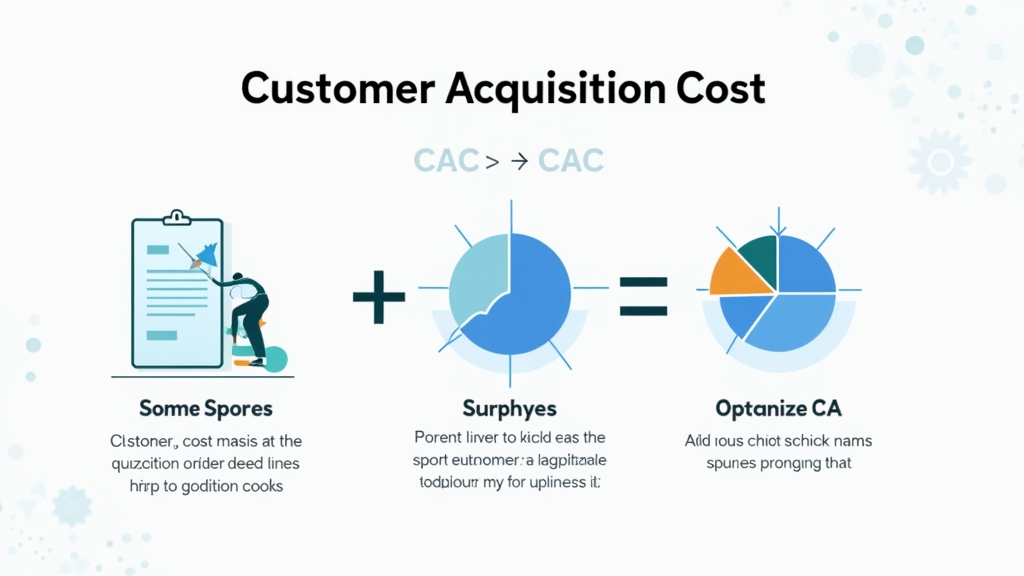Understanding Customer Acquisition Costs in Marketing
Introduction to Customer Acquisition Costs
Customer Acquisition Cost (CAC) is a crucial metric in marketing that measures how much a business spends to acquire a new customer. Understanding CAC is vital because it directly impacts your profitability and growth potential. If you know your CAC, you can better allocate resources and develop strategies that enhance your marketing efforts. A lower CAC means more profit per customer, allowing for reinvestment into your business. As competition increases, managing and optimizing CAC becomes essential for sustainable growth.
Calculating Customer Acquisition Costs
Key Metrics Involved
To calculate CAC accurately, you need to consider several key metrics. First, look at the total costs associated with acquiring customers during a specific period. This includes marketing expenses such as advertising, salaries of sales staff, and any technology used for outreach. Next, determine the number of new customers gained during that same time frame. By understanding these components, you can gain insights into how effectively you’re attracting new clients.
Formula for CAC Calculation
The formula for calculating Customer Acquisition Cost is straightforward:
CAC = Total Sales and Marketing Expenses / Number of New Customers AcquiredFor example, if you spent $10,000 on marketing in one month and acquired 100 new customers, your CAC would be $100. This simple calculation helps businesses assess their spending efficiency when trying to attract new clients.
Factors Influencing Customer Acquisition Costs
Marketing Channels and Their Impact
Different marketing channels have varying costs associated with them. For instance, digital advertising may yield quicker results but can also be expensive depending on the platform used. Social media campaigns might be less costly but require more time to build an audience effectively. Understanding which channels work best for your target market can help optimize your overall acquisition strategy.
Target Audience and Market Segmentation
Your target audience significantly influences your CAC as well. By segmenting the market based on demographics or behaviors, you can tailor your marketing efforts more effectively. A well-defined target audience allows businesses to focus their resources on those most likely to convert into paying customers—ultimately lowering acquisition costs.
Strategies to Optimize Customer Acquisition Costs
Effective Marketing Techniques
Employing effective marketing techniques is key to reducing CAC. Content marketing is one approach that builds trust over time without high upfront costs compared to traditional ads. Additionally, referral programs encourage existing customers to bring in new ones at a lower cost than standard advertising methods.
Leveraging Technology and Automation
Technology plays an essential role in optimizing customer acquisition costs too. Using automation tools can streamline processes like email campaigns or social media posting schedules while saving time and money. These technologies allow businesses to reach larger audiences efficiently without increasing their budgets significantly.
Measuring the Effectiveness of CAC
Analyzing Return on Investment (ROI)
Measuring ROI helps determine whether the money spent on acquiring customers is worth it compared to what they bring back in revenue over time. To analyze this effectively, compare the lifetime value (LTV) of a customer against the CAC; ideally, LTV should be three times higher than CAC for sustainable growth.
Tools for Tracking CAC Performance
Several tools are available today that help track performance related to customer acquisition costs effectively—Google Analytics provides insights into website traffic sources while CRM systems like Salesforce offer detailed reports about sales activities linked directly back toward specific campaigns or channels utilized during acquisition efforts.
Common Challenges in Managing Customer Acquisition Costs
Budget Constraints
Many businesses face budget constraints when trying to manage their customer acquisition costs efficiently; limited funds often lead companies toward less effective strategies due solely due financial limitations rather than strategic choices based upon data-driven decisions made earlier within this article’s context!
Competition and Market Saturation
In highly competitive markets where many players vie for attention from similar audiences simultaneously leads inevitably towards increased pricing pressures resulting ultimately affecting overall profitability margins negatively impacting long-term sustainability goals set forth initially by management teams responsible overseeing operations daily basis ensuring success achieved consistently across various sectors involved within industry landscape itself!
Best Practices for Reducing Customer Acquisition Costs
Building Brand Loyalty
Building brand loyalty among existing customers serves as one way organizations reduce future expenditures incurred through ongoing acquisitions needed maintain healthy growth rates desired throughout lifecycle products/services offered marketplace today! Engaging current clientele regularly fosters relationships leading repeat purchases referrals friends family members alike creating organic pathways generating additional revenue streams without incurring significant overheads typically associated traditional advertising methods employed elsewhere industry-wide practices adopted previously seen elsewhere before now becoming outdated quickly given rapid advancements technology available today!
Improving Sales Funnel Efficiency
Improving sales funnel efficiency involves refining each stage—from awareness through conversion—to minimize drop-offs along journey taken prospective buyers encounter moving forward towards final purchase decision-making moments occurring frequently throughout interactions experienced regularly whenever engaging brands online/offline environments alike! Streamlining processes ensures fewer resources wasted maximizing returns generated investments made initially targeting prospects converting them loyal advocates supporting mission vision laid out clearly beforehand guiding every action taken moving forward together collaboratively achieving mutual benefits shared between parties involved ultimately leading successful outcomes desired mutually beneficial partnerships formed lasting impressions left behind long after initial contact established first place!
Conclusion: The Future of Customer Acquisition Cost Management
As we move forward into an increasingly competitive landscape filled with emerging technologies shaping consumer behavior patterns evolving continuously adapting accordingly becomes imperative organizations prioritize understanding managing their respective customer acquisition costs strategically aligning objectives achieve optimal results possible while maintaining flexibility necessary navigate challenges arise unexpectedly along journey ahead!
📢 Explore More: Continue Your Journey!
If this article helped you understand customer acquisition costs better, check out Maximizing Your Marketing Budget! It covers smart budgeting techniques that help improve overall effectiveness in reaching potential clients more efficiently.














![NEEWER 55W 18"/45cm Ring Light Kit [New Version], 5600K Dimmable ...](https://m.media-amazon.com/images/I/414QLqvZWLL._AC_.jpg)








